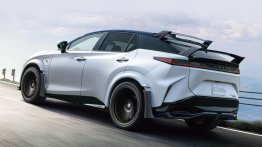Hyundai i20 has been in the Indian market for almost a dozen years now. It was launched for the first time in the country in 2008. In 2014, the second-gen model of the car was introduced. Now in 2020, the South-Korean carmaker has rolled out the third-gen model of the premium hatchback. It now misses out on the Era trim, which used to be the entry point for the i20’s variant line-up, and therefore, prices start at INR 6.79 lakh. But, does it ticks the right boxes to lure the Indian audience and carry forward the legacy of its older generations? Let’s find it out 2020 Hyundai i20 in this review.
2020 Hyundai i20 First Drive Review – Exterior
First glance at the all-new Hyundai i20 is enough to showcase its European design elements. Hyundai, however, is a South-Korean brand, but the third-gen i20 looks European from all angles. A big reason for this trait is the market that Hyundai is targeting with the all-new i20. Although, in its India-spec avatar, it features slimmer front bonnet and a new radiator grille to measure under 4 meters in length.
From the front, it looks sporty. Thanks to the massive radiator grille, upswept headlamps, and sharply-designed foglamp housings. Also, the bonnet gets tight creases that accentuate the sportier appeal of the front facet. On the sides, the i20 gets a proportionate silhouette that is perfect enough to lure a lot of young buyers. The 16-inch diamond-cut alloy wheels look inspired from the Verna, but they are actually chiral to the Verna’s. The rear fascia of the i20 feels youthful too. The Z-shaped tail lamps connect via a reflector strip, which has been infused with a slim chrome ribbon.
The all-new i20 also comes with piano-black side skirts, rear diffuser, and front lip. These elements give it a low slung appeal but without adding a lot of visual bulk. Sadly, Hyundai has omitted out the all-LED headlamps on the India-spec model. It gets LED-projectors, instead. The foglamps are projector units as well, and they get LED lighting elements, which isn't all that great at illuminating surrounding when it’s foggy. Interestingly, the ORVMs are sleek and are inspired by a German car brand. Overall, the new-gen i20 looks modern and youthful from all angles.
2020 Hyundai i20 First Drive Review – Interior
In the past generations, the Hyundai i20 has managed to hold the top spot in terms of the interior's look and feel. Thankfully, Hyundai has managed to stick to the suit this time as well. The i20 now gets an even more upmarket cabin with a premium ambience. The dashboard layout feels modern and borrows a lot of design elements from a slew of German brands. The most noticeable of all are the AC vents. They feature an uncluttered layout. The climate control button housing is neatly integrated, and using it isn’t a task either.
The instrument console is an all-digital unit and is similar to that seen on the bigger Verna. Moreover, the plastics feel good enough for this price point. The same can also be said for the fit and finish levels as well. Talking of the features, the i20 comes equipped with bucket loads of them. It gets a 10.25-inch touchscreen infotainment unit that offers Android Auto and Apple Carplay compatibility, 7-speaker Bose sound system, electronic sunroof, air purifier and more.
In terms of space, the new-gen i20 now scores better than its predecessor. The wheelbase is longer by 10 mm, which has surely helped the designers in extracting lot more knee room and legroom for the passengers. The shoulder room with three occupants in the second row, however, is inadequate. But, there’s an armrest that can be dropped down to seat two in utmost comfort. Sadly, it misses out on cupholders.
The seats on the i20 are big and supportive. Long hauls would surely be a breeze in them. Cubbyholes, there are many. Moreover, there is a dedicated place for your smartphone, which also offers wireless charging and cooling functionality. And, so is the case with bottles. Lot of them can be placed in the cabin, while a couple of them can be stored and chilled a bit in the cooled glove box.
2020 Hyundai i20 First Drive Review – Engine & Gearbox
In this aspect, the Hyundai i20 certainly has a command over the competition. With five engine-gearbox combinations, almost everyone has one to fulfil their requirements. The list includes three engine options – 1.2L Kappa petrol, 1.0L turbo-petrol, and 1.5L turbo diesel. The Kappa motor now pushes out 88 PS and 113 Nm, and it can be had with either a 5-speed MT or a CVT. The 1.0L turbo-petrol unit, on the other hand, is rated at 120 PS and 172 Nm. It is available with two transmission choices – 6-speed iMT and 7-speed DCT. The oil burner, it is the most powerful one in its segment and develops 100 PS against 240 Nm, but is available with a 6-speed MT only.
One of our test units had the 1.0L turbo-petrol with the 7-speed dual-clutch automatic, while the other one had the oil burner with the stick shift. Since i20 is one of the very few hatchbacks that are available with a diesel engine, let us begin with this one first. This power plant feels tractable at almost every part of the rev-range. Surprisingly, the turbo-lag is well-controlled and is not much of an issue. However, the same cannot be said for the refinement levels. At idle, the motors feels vibey. However, the vibes disappear at higher rpms. Another aspect that it excels on is the frugality. During the test run, it returned a ballpark figure of 20 kmpl. The 6-speeder is smooth to use as well. Also, the clutch is light and has short travel.
The turbo-petrol motor with the 7-speed DCT, on the other hand, feels a lot livelier than the oil burner. The 3-pot setup is torquey, and we’ve been singing its praises since we first experienced it on the Venue. It has a lot of grunt on offer and pulls seamlessly to the redline. The dual-clutch unit is hassle-free and works in tandem with the engine to offer a lot of fun and feedback to the driver.
2020 Hyundai i20 First Drive Review – Ride & Handling
Hyundai cars are often criticized for their not-so-great dynamics. However, Hyundai engineers have tried to iron out most issues with the new-gen i20. It certainly feels communicative and better handler than its previous-gen model. The increased wheelbase and wheel tracks are the reasons behind this improvement. The steering wheel on both our test units felt light at city speeds and showed no reluctance to gain weight with the increase in velocity. Though, it felt a little off around the centre but offered more feedback than other Hyundai cars.
The i20 continues to get disc brakes at the front end and drums at the rear. The braking action and stopping capabilities of this system are great, but the pedal lacks the feedback. Talking of the suspension, with McPherson struts up front and a multi-link setup at the rear, i20 is competent at absorbing bumps, potholes, and road undulations. No, it does not wallow around or squat like other softer sprung cars. Though, the diesel felt front-heavy, and therefore, we observed strong rebound from the front-end. On the whole, the i20 offers an improved balance of dynamics and comfort now.
2020 Hyundai i20 First Drive Review – Verdict
Also read - New Hyundai i20 Black Rendered; Here's How the Car Would Look All-Things-Dark
At a starting price of INR 6.79 lakh, the 2020 Hyundai i20 certainly looks expensive in comparison to its rivals. However, the base-spec Magna trim comes loaded with a lot of features. Moreover, the high-end trims do not feel over-priced when compared to its rivals. With improved dynamics and road manners, the i20 has now closed the gap with Tata Altroz and Maruti Baleno. But, it stands out from the competition by offering a feature-loaded cabin that looks premium too. While the looks are said to be subjective, the i20 definitely looks gorgeous, and the design will start growing on the audience gradually. So, in case you are in the market hunting for a new premium hatchback, the all-new i20 should be considered. A lucrative and well-rounded package it is.




































